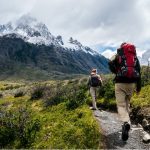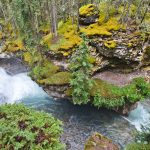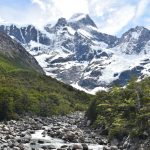Although you will witness some of the most stunning scenery, as you hike the Zion National Park, the Zion National Park weather is changeable, to say the least! During the summer season it is not uncommon for temperatures to reach more than 100 degrees, so if you are venturing out on a hiking trail, early in the morning or late in the evening is the best time to go. Spring and fall have the best weather for hiking, with April, May, September, and October being months that are most suited to the majority of hikers.
The weather is typically sunny and warm with temperatures ranging from 60 to 90 degrees. However, you must be aware that these months are prone to being cool on occasions with spells of rain. In the spring, some of the canyons have higher water levels, so they are inaccessible. From a weather perspective, fall is the best time to visit with mild nights, low water levels, and clear days making exploration of the Zion National Park much safer.
Thinking of visiting Zion National Park? Here is how to best prepare yourself:
Planning
Thought should be given before venturing out into the national park. The weather can be quite unforgiving and the terrain a challenge. Therefore, it is important that you are aware of the weather forecasts. Some hikers prefer to venture off the usual trails and make use of a compass and map to navigate their way. Except, this is not recommended for the beginner who may be unaware of dangerous slick rock which is extremely slippery. It is much easier to ascend slick rock than to descend so this should be considered when planning your route.
Hydration
When hiking in the Zion National Park, it is essential that you remain hydrated. It can be surprising how quickly the desert air draws moisture from the body. Hikers should, therefore, aim to drink a lot of water during the day. Water sources can run dry at certain times of the year and they often include microbes which can result in disorders of the intestine. Before you set out, always make sure that you have sufficient water supplies to meet your daily intake requirements.
Bites And Stings
Many animals that you find in the terrain are poisonous and when they are unintentionally provoked, they may sting or bite. Be aware that the area is a rattlesnake habitat and although they do bite, they only do so if cornered or surprised. As you walk, be careful where to place your hands or feet and do not reach into dark places or overturned boulders. This will also help you to avoid stings from other animals such as scorpions.
Learn How To Navigate
The most popular trails in this area feature routes, which are not marked. As a result, you should have a few basic trail finding skills if a trail fades away or snowfall covers the path. A compass and topographic map will be useful, so too will the skills to make use of them.
As long as you prepare, take the right kit, and understand the weather risks, there is no reason why you cannot enjoy a safe and enjoyable trail!








After reading this article, I can truly say i’m prepared to take a trip to Zion National Park-when it gets to its turn on my list. A very concise and insightful article that not only tells what to expect, but somehow build excitement for the adventure.